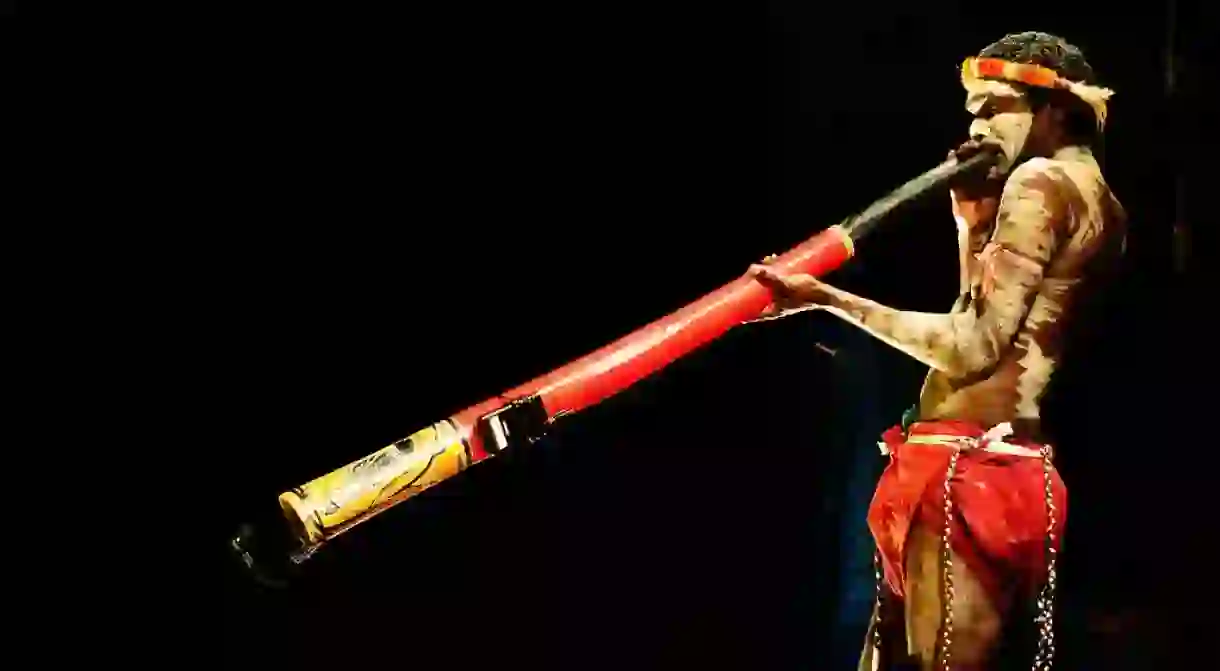Kunapipi: Indigenous Australia's Blood Rituals

At the heart of Aboriginal Australians’ beliefs is the Dreamtime, which refers to the time when their ancestors made everything.
One of the most important spiritual figures from the Dreamtime is the Rainbow Serpent, which is just as important today as it was many years ago. Keep reading to learn more about the relationship between the Rainbow Serpent, the Wawalag sisters and Kunapipi rituals.
Wawalag (Wagilag) sisters
There are many legends regarding the Rainbow Serpent and Wawalag sisters. Firstly, there’s the story that the two sisters were travelling in northern Arnhem Land from the Roper River area, when the older sister gave birth and her blood flowed into the waterhole where the Rainbow Serpent lived. Setting up a hut for the night, once a storm rolls in the sisters take turns dancing and singing songs about the Rainbow Serpent, Kunapipi and rituals to calm the storm. Because its home had been fouled by the blood, the Rainbow Serpent enters the hut once they’re asleep and eats them, but then regurgitates them when bitten by a nervous ant. This act consequently creates Arnhem Land and its Aboriginal tribes, where the Rainbow Serpent speaks in the sisters’ voices and teaches sacred rituals to the locals.

In another Dreamtime retelling, the Wawalag sisters are travelling with their mother, Kunapipi and the Rainbow Serpent is angered by their presence. There’s also been stories retold that the Wawalag sisters were Djanggawul descendants: a trio of deities who birthed many of the Earth’s creatures. It’s said that the combination of the blood, water and the Rainbow Serpent created the wet season, which is crucial for all living things, and couldn’t be achieved solely by the sisters or the Rainbow Serpent.
Kunapipi
Kunapipi is considered a spiritual being that came after the Rainbow Serpent. The goddess travelled across Australia and gave birth to men, women and natural species. Hence when it comes to Kunapipi rituals, there’s an emphasis on birth and rebirth.

Kunapipi rituals
Kunapipi rituals are allegedly held during the dry season when there’s plenty of food supplies, and can last from two weeks to many months. Young boys are initiated at these rites, and smeared in red ochre (a natural clay pigment) and arm blood. It’s said that once the voice of the Rainbow Serpent is heard, the boys are led out of the camp to the sacred ground, which is triangular in shape to represent the Serpent’s body.
This is where they are to be ‘swallowed’ by the Serpent, like the Wawalag sisters. According to Australian Aboriginal Religion (Volume 3), at the main camp women are crouched under ngainmara mats while the men dance around them, like the Rainbow Serpent circled the Wawalag sisters’ hut.
There are different variations noted of what happens following this moment. Australian Aboriginal Religion (Volume 3) describes one sequence involves a shelter, like the Wawalag sisters. The young boys, smeared in ochre and blood, are inside, while women and children (also covered in red ochre) dance like the Wawalag sisters. Then the men dance around them, before the young men emerge from the djepalmandji (shelter) and knock it down. To finish the ritual, everyone is painted in ceremonial ochre designs to represent the Rainbow Serpent. It all comes back to the Rainbow Serpent.













